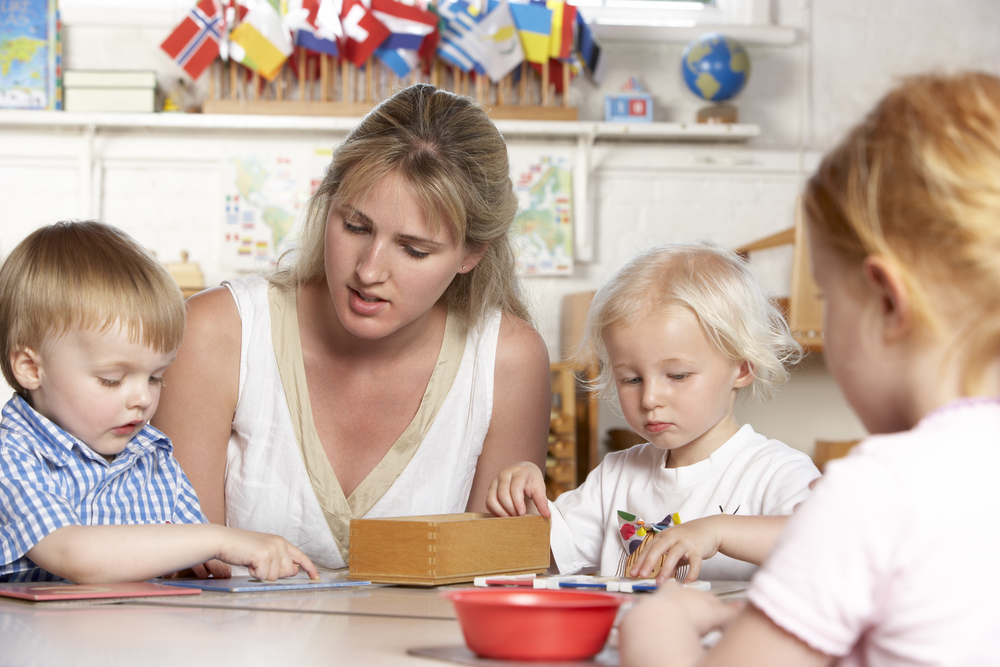The Benefits of Multi-Age Classrooms
One of the main features of the Montessori method is multi-age classrooms. Montessori specialists place a child in a classroom based on their individual level of development, instead of placing them by their exact age. Typically, Montessori children are grouped according to the plane of development that they fall into. The planes of development include the following age groups: 0-3, 3-6, 6-9, 9-12, 12-15, and 15-18 years old. Dr. Maria Montessori developed these three-year cycles based on her extensive psychological studies and scientific observations of children.
Why this Matters
While children in a traditional school system have a different teacher every year, multi-age classrooms allow children to remain with the same teacher for several years. This ensures that the teacher will develop a deep bond with each student, as well as a deeper understanding of every child’s unique needs. This results in a more effective teaching method that truly works for each student. Children also feel more relaxed around their teacher and their classmates because they have known them for multiple years. When a child becomes comfortable with their surroundings, the child is able to better focus on their education, as they do not have the added worry or stress of having to get to know a new teacher and make friends with a new group of classmates each year.
A Montessori classroom helps to develop leadership skills that will last a lifetime. In a mixed-age classroom, older students have the opportunity to become mentors to younger students. These mentors help to teach their younger mentees ideas and concepts that are slightly more advanced, and are able to answer any questions that their mentees may have. Mentorship learning is beneficial to both the mentor and the mentee, as both parties involved gain valuable skills by collaborating with one another. Older students are able to reinforce their own knowledge base by teaching the younger students, and the younger students benefit from having a mentor who is always available to help them.
Effects on Development
As children pass through the planes of development, they begin to develop certain attributes and needs according to their age group. Since children are grouped in classrooms based on their plane of development in order to maximize each child’s learning, each period of transformation is taken into consideration in the Montessori method. Since children stay with the same teacher throughout their three-year cycle, they gain more understanding and the teacher is able to tailor their education method based on each child’s individual needs.
Being able to interact with other children, either younger or older, helps a child to develop the social skills necessary for future successes. Many times, younger children are intimidated by older children, simply because they have never interacted with them before. In Montessori classrooms, students of different ages interact with each other on a daily basis, so younger children become more comfortable playing and learning with older children. Additionally, by being around children of different ages, a child is exposed to many different levels of all subjects at all times. This creates a constant cognitive stimulation that sparks a great and more organic interest in learning.
Our Mission
At Silverline Montessori, we designed our multi-age classrooms to help all of our students develop confidence in their abilities, leadership skills, and a deep love of learning. Children learn how to get along with others and resolve conflicts peacefully in our classrooms. They also learn the importance of kindness towards others, sharing learning materials, and providing assistance when another student needs help. All of these are valuable skills that will last your child a lifetime.











